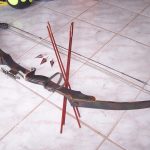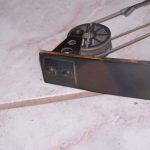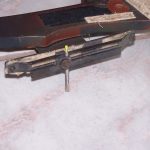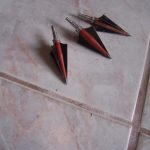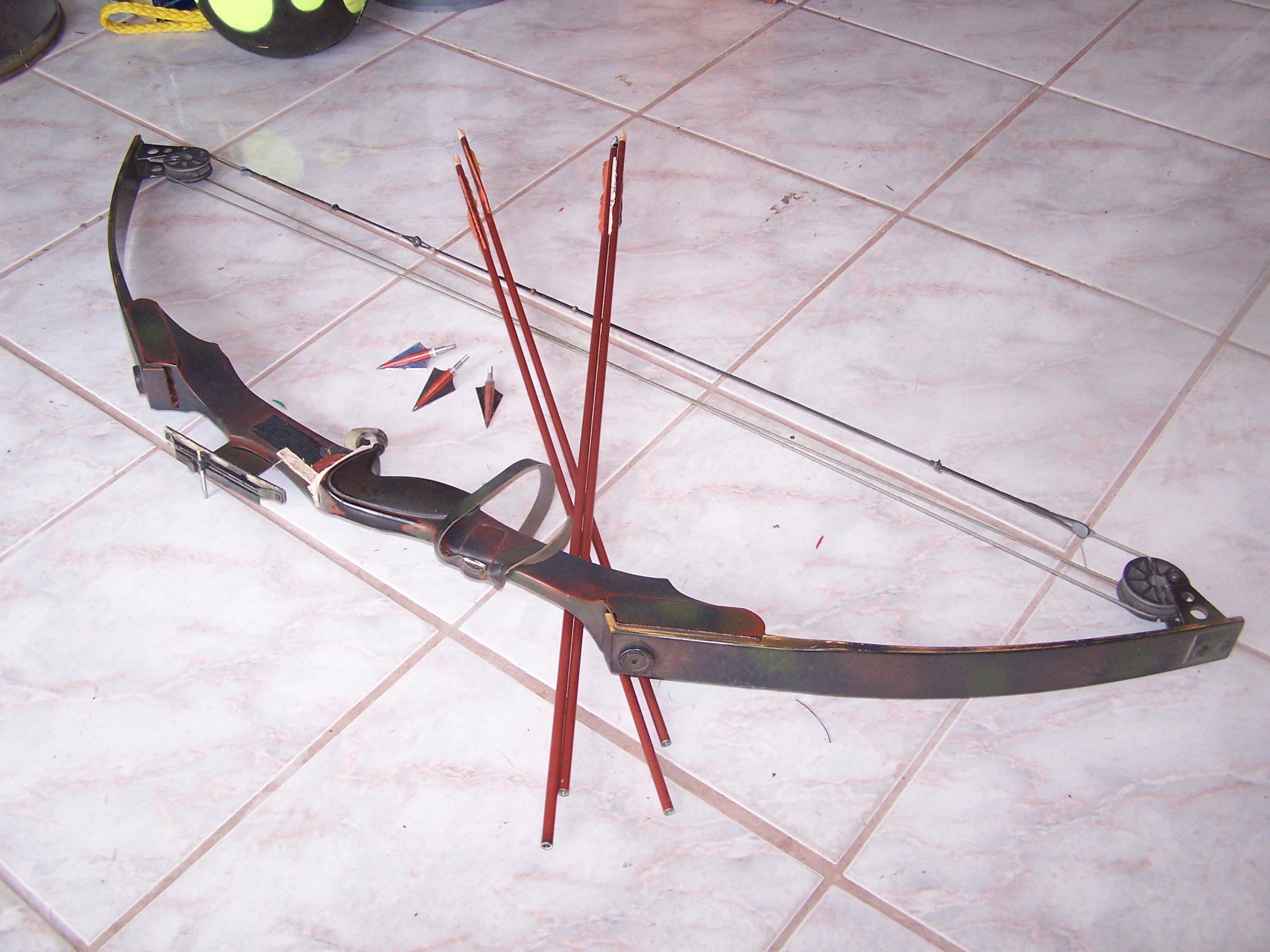
Traditional Archery: Older Than Dirt – Bowhunting 1976-2016
I’ve started getting these birthday cards that say things like “In Dog Years, You’re Dead!” or “How Does It Feel to Be Older Than Dirt?” I’m currently planning my vendetta against those who send me such messages, but looking back I do have to admit that I’ve seen a lot of bow seasons. My first bowhunting season was in 1976 and I can just hear many of you saying; “I wasn’t even born yet.” Or maybe, “that was my first year in pre-school.” So yeah, 2016 isn’t my first rodeo or, in this case, my first bow season. I’ve seen a lot of archery seasons come and go and over 40 years I’ve seen a lot of changes.
One change that I’ve been sad to see come about is the disappearance of the family hunting lease. In central Texas in the 1970’s you could often find a lease for $300-$500 and that was for the whole family. That wasn’t just for bowhunting; it included rifle hunts as well. Now most of the bucks disappeared after opening weekend of the gun season and the deer were the size of small German Sheppard’s, but you could bring your whole family, even all of your kids. They could hunt, and if they saw a deer, they could shoot. Compare that with what you have today.
Take my last archery hunt of the 1978 bow season. My heart started beating faster when a doe came out to the feeder. Then I saw HORNS! Oh boy a four point! I slowly drew and shot (at the four point of course). It had horns. As the buck ran off, I could see my arrow sticking in the ground. I thought it was a good shot, but I couldn’t be sure. But it didn’t matter. As I waited a few minutes before making my track, the doe came back. She was skittish but worked in to the feeder. I’d start to draw … and head bob, …start…bob. Finally, I drew and shot. After some tough tracking I managed to get both the buck and the doe and had a lot of venison for the next year, but oh my aching back! I don’t think I’d take two shots today (even on the last day of the season). My back needs more recovery time.
Now some of you may be saying, “Why’d you shoot that young forkhorn? That was obviously a young deer.” In the seventies there was a different viewpoint than today. As a bowhunter, you just wanted to get a deer. People would say and really mean it, “Any deer with a bow is a trophy”. Big buck, small buck, doe, young, mature it didn’t matter. Any deer with a bow was a trophy. It was only later that there was a basic philosophy shift to QDM.
QDM (otherwise known as Quality Deer Management) started with the publication of a book Producing Quality Whitetails by Al Brothers and Murphy E. Ray, Jr. in the mid 1970s. In their book they pointed out the three ingredients for big bucks: age, nutrition and genetics. Most bowhunters today know these things well and as a result we’ve seen the growth of food plots, imported genetics, shooting more does and cull bucks, high fences, etc. All of these changes in hunt philosophy have resulted in bigger horns, but in my opinion we’ve lost some things as well. In my younger days we had more shot opportunities.
Take a hunt I was on in 1977. Suddenly twelve deer took off running. They had bedded down in a Hackberry thicket in a creek bottom on West Fort Hood. Four of us had wondered why we kept seeing deer leave the wooded areas around Crossville Mountain and disappear into that open field every morning. Today we had decided to find out, and had eased out of the woods and into that field. Coming over a small rise we spotted a dozen deer bedded down in a hackberry thicket only 70 yards away. But before we could make a stalk they spotted us too. Can you say STAMPEDE? They were bailing out around us and heading for the woods. All at once my buddy Charles McMillen took off at a gallop. Running hard he cut the angle that the deer were traveling, but they were still passing him at 50 yards. Raising his bow at a 45 degree angle he let an arrow fly.
Of course he missed, but to hear him tell it, his lead was perfect; it was coming down right on the first buck, a heart shot even, when suddenly, sensing something, that deer veered away. No venison, but Charles told lies about that shot for years and, boy, were we excited.
Now some of you out there are shaking your heads. “What kind of unethical “Hail Mary” shot was that? That’s a good way to wound a deer and lose a $20 arrow and broadhead! ”. These days I’d agree. I’d never take that shot today, but that hunt was 39 years ago and in those days, most hunters truly felt that any deer with a bow was a trophy. Even getting a shot was cause for excitement. Having bowhunted for 40 years I no longer take low probability shots for fear of a wounding loss, and besides, I’m too cheap to pay for a busted broadhead or arrow. You should realize though, that while I wouldn’t take that shot today, in 1977 no one thought twice about it. There was a lot of excitement over just getting a shot.
I see hunters today talk about waiting for a mature deer. You know, one that’s at least five and a half years old and scores well too. On a recent hunt I even heard hunters say to a successful hunter on a day lease: “Too bad you didn’t let that 10 pointer go another year or two. It’s only three and a half years old. He would have been a lot better in two more years.” That may be the attitude now, but years ago there was a whole different viewpoint. We just wanted a deer. Any deer with a bow was a trophy. Most of us were happy with any deer.
Maybe this is because we were all meat hunters. Our parents had grown up in the great depression, and while we loved big horns, you couldn’t eat the horns. A four point was good, a fat six point even better, and a doe was dandy, that is, if you could shoot a doe.
There were a lot of years you couldn’t shoot a doe, even in archery season. I remember reading an article by a famous writer about “The Myth of the Sacred Doe”. You see the theory was; it’s ok to shoot all the bucks you want, but leave the doe alone as a breeding stock to produce more deer. I know that seems stupid today but that was the theory. These were the years in Texas with doe permits, which you had to apply for at the local county courthouse. If you hunted small archery acreages, you didn’t even get a permit. I can still remember bowhunting my Texas Veterans land tract in Burnet county and seeing 15 to 25 doe on every hunt. I just couldn’t shoot one. Thankfully that eventually changed to where you were allowed doe in archery season, and eventually even in the general season, but initially in many counties you were only allowed to hunt bucks.
Maybe that’s why horns, any horns, still excite me. When I started bowhunting, you were allowed two bucks, even on small acreages. The strategy was simple. Shoot the first buck you saw. Put meat in the freezer, and then save your other tag for the big one. Since there weren’t many big bucks around in those days, you often didn’t use that second tag, but by shooting at the first buck that came by, you would at least have venison in your freezer, unless of course you missed.
I hate to admit it, but I missed a lot in my first two years. It wasn’t due to lack of practice either. I had joined a league at my local archery shop before my first season and shot every week. I never shot a perfect 300, but most weeks I was in the 290s. More than accurate enough to kill a deer. What I didn’t realize was that my broadheads didn’t fly to the same spot as my field points. In fact my broadheads grouped six inches away from where my field points did. I had equipment issues.
So let’s talk equipment. In 1976 game cameras were a spool of black thread that you put across game trails. You never knew what broke it. It could be a deer, a cow, or your hunting buddies just messing with you. You do have those kind of buddies, don’t you? I hope you have a chance to get even.
For deer stands, there weren’t any pop-ups, no tripods and most tree stands were two by fours nailed across two tree limbs with some heavy duty plywood on top of that. The first commercial tree stand I recall was the Baker climbing tree stand. No seat, and if you weren’t careful it would collapse under you. We’ve come a long way.
As far as bows the K-Marts and Woolworths, were filled with bright shiny green Bear Sierra Magnum recurves. Killeen, Texas though had a brand new archery shop and I ended up with the latest in high tech, a PSE Pacer compound bow. Wheels, not cams, and with its 30% let-off I was in business. That’s right 30%. That meant that for my 50 pound bow I was holding at 35 pounds. If today you have a 100 pound bow with 65% let off, you would be holding the same I did with my old 50 pound PSE Pacer.
I harvested 13 deer with that bow. It wasn’t fast and it didn’t shoot flat. Actually, using my one pin sight system, I had to hold an inch high for every yard past 20. Think of it like trying to shoot something with a .30-.30 rifle at 300 yards. You lobbed something at it, and hoped you judged the arc right. But it still it gave you a chance and all the excitement of the hunt.
Bows have come a long way and so have arrows and broadheads. In 1976 most people were moving from wood arrows to Easton aluminum, with autumn orange being the predominant color. I don’t remember if camo arrows were out yet, or if you shot orange ones because they were cheaper, but it didn’t seem to matter to the deer. Orange worked just fine. For some reason I was one of the few people not using aluminum. My archery shop outfitted me with Shakespeare fiberglass arrows; tough to break and massing something like 600-700 grains. My goodness those arrows were slow, but when they hit, and boy did they penetrate.
Filling out the picture were my broadheads. Mechanicals hadn’t been invented yet and for the veterans the broadhead of choice were Bear razors which you sharpened with file and stone. Not being a very good sharpener, I went with Satellite four blades. These came with solid, non-vented replacement blades and tended to plane rather badly. I missed a lot of deer until I figured out that my broadheads and field points just didn’t hit in the same place. At 20 yards they were like six inches different. I had to adjust my sights differently for field points and broadheads. I ended up with a couple of dedicated practice broadheads. I’d shoot those, and adjust my sights to them, before each hunt. Once I started doing that, I put a lot more venison in my freezer.
I could go on and on about the changes I’ve seen in 40 years, but enough is enough. Things that haven’t changed are the anticipation and dreams as I prepare for hunting season and the hunts, the camps and camaraderie with family and friends and the excitement as I walk to the stand on a crisp cold morning. I still feel the adrenaline spike when I see my first deer and the moment when I slowly raise my bow, draw and send an arrow on its way. No matter how old I get those feelings will never change. I may be older than dirt, but those feelings are why I’m still a bowhunter.
Story by Tomme R. Actkinson
- Published On : 9 years ago on June 8, 2017
- Author By : admin101
- Last Updated : July 8, 2017 @ 1:30 pm
- In The Categories Of : Uncategorized

